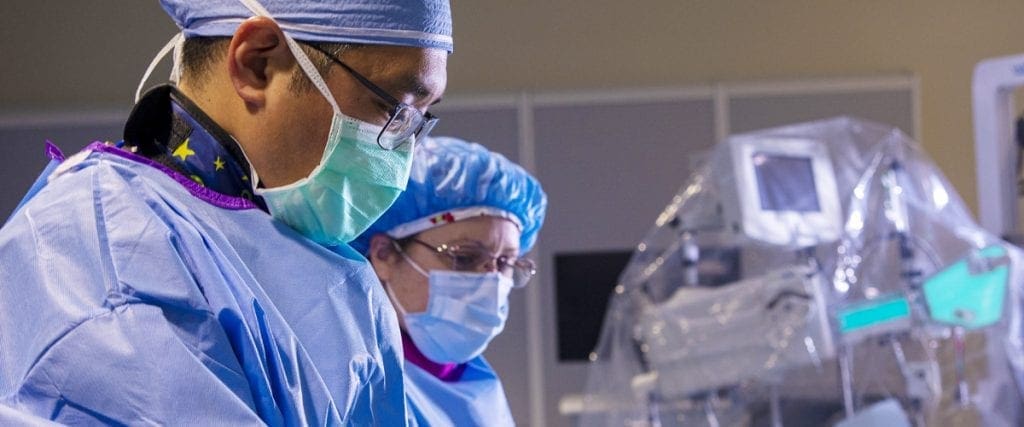Amputation Prevention & PAD Treatment
If you’re being told you need an amputation, there may be an option to save your limb. UM Health-West’s Heart & Vascular Amputation Prevention Program specializes in diagnosing and treating circulation problems by opening blocked arteries. This can prevent amputation and reduce the risk of heart attack or stroke.
Circulation Problems
Peripheral Arterial Disease (PAD) afflicts 8.5 million Americans over the age of 40. Those who have PAD often don’t recognize the symptoms. Critical limb ischemia (CLI) is the most advanced form of PAD.
The good news is we can check for PAD and other circulation issues with a simple test that is quick, easy and painless.
Treating PAD
Treatment often includes a combination of lifestyle changes, medications and endovascular intervention or bypass surgery.
- Manage symptoms so physical activities can resume
- Stop the progression of atherosclerosis to reduce the risk of heart attack and stroke
About PAD
Arteries and veins are both crucial to our cardiovascular health. Arteries push blood away from your heart down to your feet, and veins make sure blood gets recirculated and headed back to your heart.
PAD is a common circulatory problem caused by fatty deposits (plaques) that build up in the artery walls, reducing blood flow to the arms or (typically) the legs. PAD may also be a sign of a more widespread narrowing of arteries causing reduced blood flow to the heart and brain.
This disease increases the danger of heart attack and stroke. Because it often affects the legs, PAD also can lead to amputation.
Some Symptoms of PAD
- Aching/pain in your legs
- Leg numbness or weakness
- Heaviness in legs
- Tiredness/fatigue
- Itching/burning
- Swollen ankles
- Leg cramps
- Restless legs
- Throbbing
- Skin ulcer
- Pain worsens with activity
- Pain lessens with leg elevation
If you think you’re experiencing PAD symptoms, schedule an appointment with a UM Health-West Heart & Vascular physician immediately.
